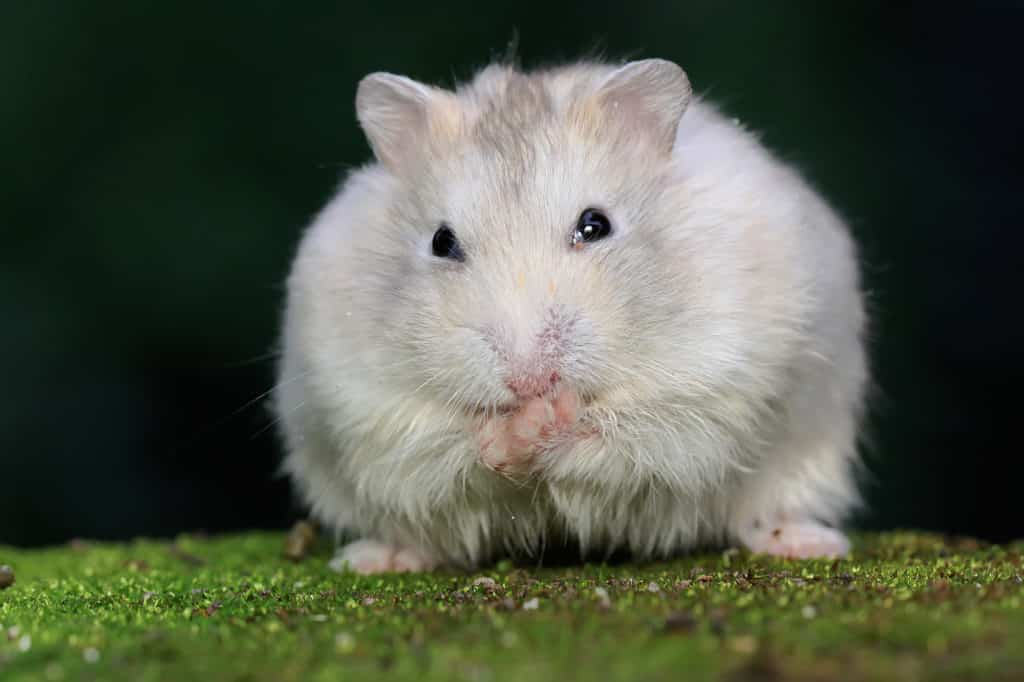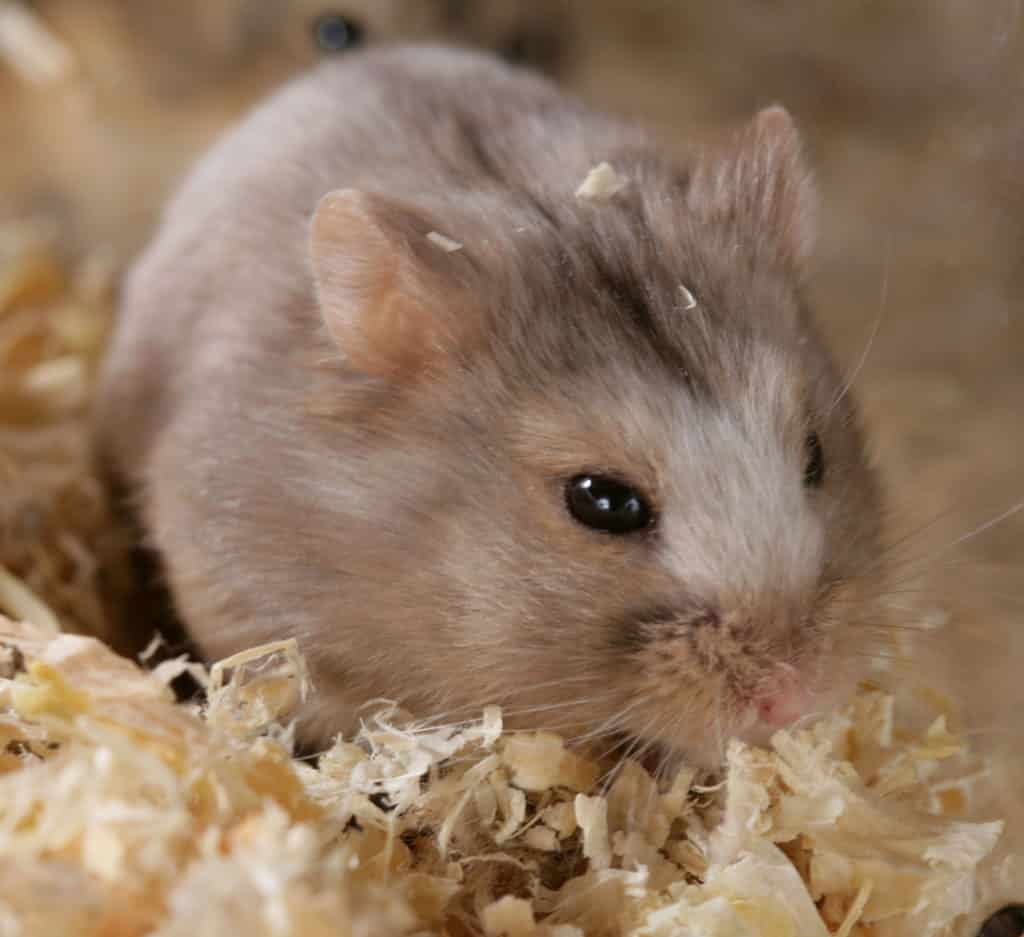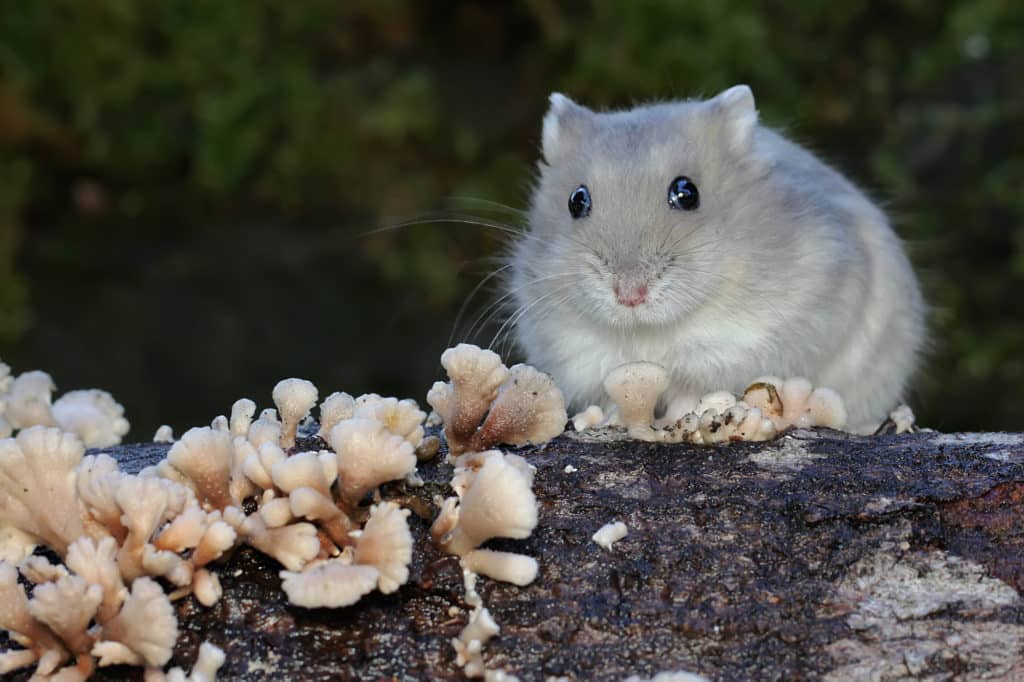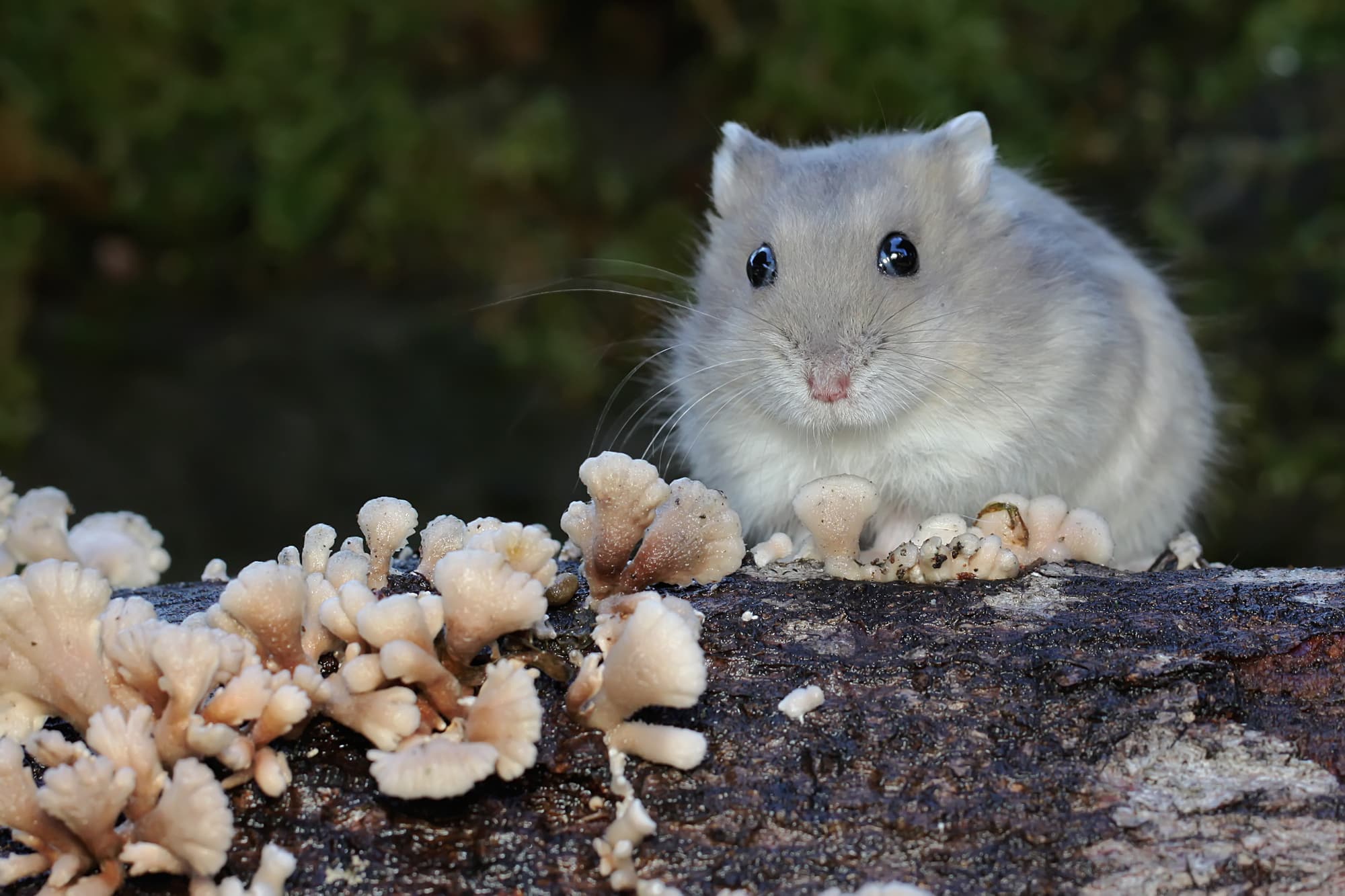For a long part of human history, humans had no idea that a creature called the hamster existed. Even though humans knew of the existence of dogs and cats for tens of thousands of years, the first hamster was sighted only in 1797. And for the next 130 years, we did not manage to domesticate them. Yet, hamsters have managed to become one of the most common small pets within a century after their domestication.
The most famous animal among these small pets is the Syrian hamster, which is more often kept as a pet than any other variety of hamsters. It is the biggest hamster in terms of size. But there are also other smaller hamster species kept as pets. These smaller hamster species are generally referred to as dwarf hamsters.
This blog post is about one such dwarf hamster species – The Campbell hamster (Scientific name: Phodopus Campbelli). You will find out everything about them in this blog post, including their origin, appearance, behavior, how they behave, what they need to stay healthy and happy, and how you can properly take care of them.
How does a Campbell hamster look?
Size
Campbell hamsters are one of the dwarf hamster breeds that can be kept as pets. There are eight wild species of Campbell hamsters. But they are all smaller compared to pet Campbell hamsters because pet Campbell hamsters get more nutrition that is not so commonly available in the wild. But even pet Campbell hamsters are smaller when compared to Syrian hamsters. An adult pet Campbell dwarf hamster can be 2 to 4 inches in length and weighs 1 to 2 ounces (Source: The Spruce pets).
Campbell hamsters are also known as Russian dwarf hamsters. However, the term ‘Russian dwarf hamsters’ can also be used to refer to Winter white hamsters and Roborovski hamsters.
Colors
In the wild, Campbell hamsters are shaded brown in color, with a dark, narrow dorsal stripe running from the neck to an inch above the tail, grey fur on the stomach, and black eyes.
But pet Campbell hamsters can also come in two additional standard colors:
- Argente – Orange/sandy coat, with grey fur under the stomach and red eyes.
- Albino – White in color with red eyes
Campbell hamsters may also be available in other non-standard colors like Black, Black-Eyed White, Blue Fawn, Beige, Dove, etc.
Coat types
As a result of extensive breeding, more than 40 different coat colors are available in pet stores today. Among them, the most common coat types and patterns of Campbell hamsters are listed below:
- Mottled patterned – Colored coat with random patches of white hair
- Platinum patterned – Colored hair intermingled with white hair giving a shiny silvery appearance.
- Satin coated – The coat looks shiny but, at the same time, greasy.
- Rex – Coat looks textured, and the whiskers are curly.
Features
Campbell hamsters have small ears. They have white fur on their lips and cheeks. They also have white fur on their feet. Campbell hamsters live in cold regions and can withstand temperatures as low as -31.8°C. At such low temperatures, they keep themselves warm by running a lot. But unlike us, they don’t have to worry about running in cold weather barefoot because the fur on their feet protects them from the extremely cold surface below.

Just like other hamsters, Campbell hamsters also have cheek pouches that extend from their mouth to their hind legs. When their cheek pouches are completely full, they can expand up to their shoulder blades, which also restricts their movement.
How to differentiate a Campbell hamster from a Djungarian hamster?
A Campbell hamster looks similar to a Djungarian hamster (also called Winter White hamster) and can be difficult even for pet shops to tell apart. But there are some body features that can distinguish them. These features are listed below:
- A Campbell hamster has smaller ears than a Djungarian hamster. It also lacks a dark patch on the top portion of its head.
- The Dorsal stripe of a Campbell hamster is narrower, darker, and shorter than that of a Djungarian hamster.
- Campbell hamster has grey fur on its stomach, whereas Djungarian hamster has white fur.
- But the most important difference of all is the fact that Djungarian hamsters turn white in winter (in the wild, not when bred as pets), whereas Campbell hamsters don’t.
How did Campbell hamster get its name?
Campbell hamsters might have many common names today, like the Djungarian hamster, striped hairy-footed hamster, and Siberian hamster. But the name by which most people recognize this hamster species is Campbell hamster. But how did this hamster get such a weird name? Keep reading to find out.
Campbell hamsters were first collected by William Charles Campbell (W. C. Campbell) in a village called Shaborte in inner Mongolia in 1902. So, to honor him, Oldfield Thomas (a British biologist who worked at the National History Museum on Mammals in London and described 2,000 new species and subspecies) named this species after him in 1905.
After these hamsters were brought to the UK, they were initially used as lab animals (Source: Animalia). Only in the 1980s did they start becoming popular as household pets.
Behavior
Social behavior
Unlike Syrian hamsters, Campbell dwarf hamsters aren’t strictly solitary or fiercely territorial. In the wild, they live in groups or colonies in tunnels that are 11 inches under the ground and have 3- to 6-feet long pathways. Sometimes, they are even found sharing their burrows with other animals, like Mongolian Gerbils.
So, they can be housed in pairs or even in small groups because they are much more social than Syrian hamsters (Source: Wikipedia). But that doesn’t mean you can put any two random Campbell hamsters in the same cage. For the two Campbell hamsters to get along, they should be introduced at a very young age, when they haven’t yet started to become territorial. It is better if they belong to the same litter. That way, they have a greater chance of getting together. But even if they get along, you should closely monitor them so that you can separate them if they become aggressive towards each other.
The hamsters you put in the same cage should also be of the same sex. If not, they can mate and produce litter you aren’t ready for.
Campbell hamsters can easily become stubborn and grumpy. They can start nipping if they don’t like something (Source: Animal fun facts). So, sometimes, they are better left alone.
Campbell hamsters are little, fast, and timid creatures. Hence, they have to be handled very gently and delicately. But their small size and timid nature make handling them a big challenge. Therefore, they are not suitable for children, and sometimes, not even for adults who are first-time pet owners.
Campbell hamsters can easily feel threatened and may even bite you if not handled gently. So, it’s better that you start handling them when they are very young, so they get used to your touch.
Diet
Wild Campbell hamsters are mostly found in the steppes and semi-deserts of China, Kazakhstan, Mongolia, and Russia. In the areas where wild Campbell hamsters live, fruits and vegetables are not readily available. Yet, these hamsters have evolved to survive in such conditions. So, their digestive systems cannot tolerate sugary and acidic foods. Indeed, Campbell hamsters are prone to diabetes. Diabetes is a hereditary condition for this species and affects a large percentage of them (Source: National Hamster Council, UK).
Therefore, their food choices are limited when compared to Syrian hamsters. This is something you have to consider if you plan on buying a Campbell dwarf hamster.
In the wild, Campbell hamsters eat nuts, seeds, corn, sunflower, oats, peanuts, dried vegetables and fruits, alfalfa, and some insects and small invertebrates. So, the diet of a pet Campbell hamster should ideally consist of 60-65% carbohydrates, 16-24% protein, and 5–7% fat.
Pet Campbell hamsters can eat boiled egg whites and unflavored, unseasoned, cooked chicken, which are great sources of protein. Occasionally, they can eat earthworms and mealworms too.
Besides regularly giving commercial hamster food like hamster pellets, you can also feed your pet Campbell hamster fresh vegetables like carrot, broccoli, corn, cucumber, and apple. But remember that Campbell hamsters are prone to diabetes. So, vegetables that contain sugars should be given only sparingly. Moreover, don’t give two fruits at the same time. The sugar in the fruits can add up.
Nursing hamsters, weaning pups, and older hamsters can benefit from milky food, like porridge and rice pudding made from cow’s milk.
Never give your hamster apple seeds because they are poisonous. Acidic food items and food items with a strong taste, like garlic, onion, lime, tomato, etc., should be avoided as well. Chocolates and toffees should also be avoided because they can stick to the hamster’s cheek pouches and cause infections.
Sleeping habits
Campbell hamsters are generally crepuscular creatures that are active mostly at night and some hours of the day.
Keeping a Campbell hamster as a pet
A Campbell dwarf hamster can live for 2 to 2.5 years if you take care of him properly. As in the case of Syrian hamsters, the right temperature for Campbell hamsters, too, is 18°C to 24°C.

As Campbell hamsters are considerably smaller than Syrian hamsters, they don’t need such a big cage. The absolute minimum floor space needed for a dwarf hamster (cage) is 288 sq. inches (24″ x 12″). However, to prevent your pet hamster from getting bored and depressed, it is recommended that the floor space of the cage be 434 sq. inches (E.g., 24″ x 18″). Moreover, the cage should at least be 12″ tall so that it can accommodate enough bedding (Source: Hamster society).
The cage should also house some hamster toys and a hamster wheel so that your hamster doesn’t get bored.
Lifecycle of a Campbell hamster
Campbell hamsters are polygynandrous, i.e., both the males and females might have multiple mating partners. A female Campbell hamster (like the females of most other hamster species) comes into heat once every four or five days. If she mates with a male during this period and becomes pregnant, pups will be born within the next 13 to 20 days. A female hamster gives birth to 7 to 9 pups per litter (single childbirth) and can have up to 18 litters per year.
Syrian female hamsters drive away the males after mating. But Campbell hamsters are more social than Syrian hamsters with members of their own species. So, the male Campbell hamster might stay back after mating and assist the female during childbirth. It might even pull out the pups from the female hamster’s birth canal and clean them. Moreover, it might gather food for the female and pups as well.
Pups are born hairless and blind. Their ears remain totally flat on their heads. After the first few days, their eyesight starts to develop, and their ears come to an upright position (Source: Animals.mom). The pups depend on their mother’s milk for nutrition during the first few days. When they are 17 days old, they are completely weaned off.
Male pups become sexually mature when they are 23 days old, whereas female pups need twice as long (approximately 48 days) to become sexually mature. So, when males are 23 days old, you should separate them from their mothers and sisters. If not, more pups could be born due to inbreeding, which you may not be ready to take care of.
Now that you know the typical lifecycle of a Campbell hamster, let’s look at which diseases and medical conditions they are prone to. After all, as a hamster parent, you should be able to look at the symptoms and tell if your hamster is sick or not. And if he is sick, you will need to take appropriate measures.
Diseases and medical conditions
Like most other hamster species, Campbell hamsters are also prone to the following health issues:
- Diarrhea: Diarrhea is a condition that many household hamster species are prone to. Diarrhea can occur in your hamster if it eats food items with a lot of water or fiber content. Unlike in human beings, diarrhea can be deadly for hamsters because it quickly leads to another condition called the Wet Tail. Symptoms of Wet Tail include loss of appetite and dehydration. But most important of all, you will find visible pieces of feces sticking to your hamster’s tail. Since Wet Tail can quickly cause death, you should immediately consult a vet if you notice any of these symptoms in your hamster.
- Mite infections: Most pet hamster species are prone to mite infections. Mites can make a hamster’s skin itchy. So, he might scratch his body against objects and lose his fur. Bald patches on your hamster’s fur might be caused because of mites. You should also be wary of the bedding you use because certain types of bedding could also cause allergies and skin infections in some hamsters.
- Abscess: An abscess is an infection under the skin that is filled with pus. A hamster could get it as a result of cuts on his skin. This could cause an infection under the skin, and pus would start to accumulate there. Soon, it would become a noticeable lump. Cheek pouches are one of the body parts that are prone to abscesses. So, you should try not to feed food items with sharp edges to your hamster. If your hamster’s cheek pouches appear to be loaded with food all the time, the reason for that might be a cheek pouch abscess. If your hamster has an abscess, take him to a vet, and he will drain the pus.
- Scent gland tumor: Hamsters have scent glands on their bodies. Scent glands help hamsters in several ways. But it is also one of the places where tumors could develop. But you don’t have to be scared just because your hamster’s scent glands appear discolored or greasy because it could be the normal appearance of the scent glands. However, you should always keep an eye on the scent glands. If they suddenly appear swollen or their color changes, you should take your hamster to a vet (Source: BeChewy).
- Teeth problems: A hamster’s teeth keep growing until he dies. So, he must continuously wear them out. Several toys are available in pet stores that can help a hamster wear his teeth out. If a hamster’s teeth don’t wear out, it could lead to an abscess. It could even grow into the hamster’s nasal cavity. A hamster whose teeth don’t wear out properly will also have difficulty eating. As a result, he might develop nutritional deficiencies and also lose weight. So, if your hamster’s teeth don’t wear out, take your hamster to a veterinary doctor, and he can trim the teeth.
- Diabetes: Besides these common hamster problems, Campbell hamsters are also prone to diabetes much more than other hamster species. It is a hereditary disease for Campbell hamsters and affects a large percentage of them. Diabetes can considerably shorten the life expectancy of a Campbell hamster. A Campbell hamster that has diabetes will urinate often. He will also feel thirsty all the time. So, his cage should have enough fresh water. The water should also be replaced every day. A diabetic Campbell hamster will lose weight and develop a bigger waist. He will eventually pass into a coma. Unfortunately, there is no cure for this. So, you should avoid food items that contain too much sugar while making sure that you give him a varied diet.
- Glaucoma: Glaucoma is another condition that Campbell hamsters are prone to. The eyes of a hamster suffering from Glaucoma will be filled with fluid and bulge. There is no cure for this condition as well. Glaucoma can be quite painful. So, surgical removal of the affected eye might be the only solution.
If you think your hamster is suffering from any of these health problems, you should take him to a veterinary doctor immediately. You should also take him for regular health check-ups so that any problem can be identified early.



